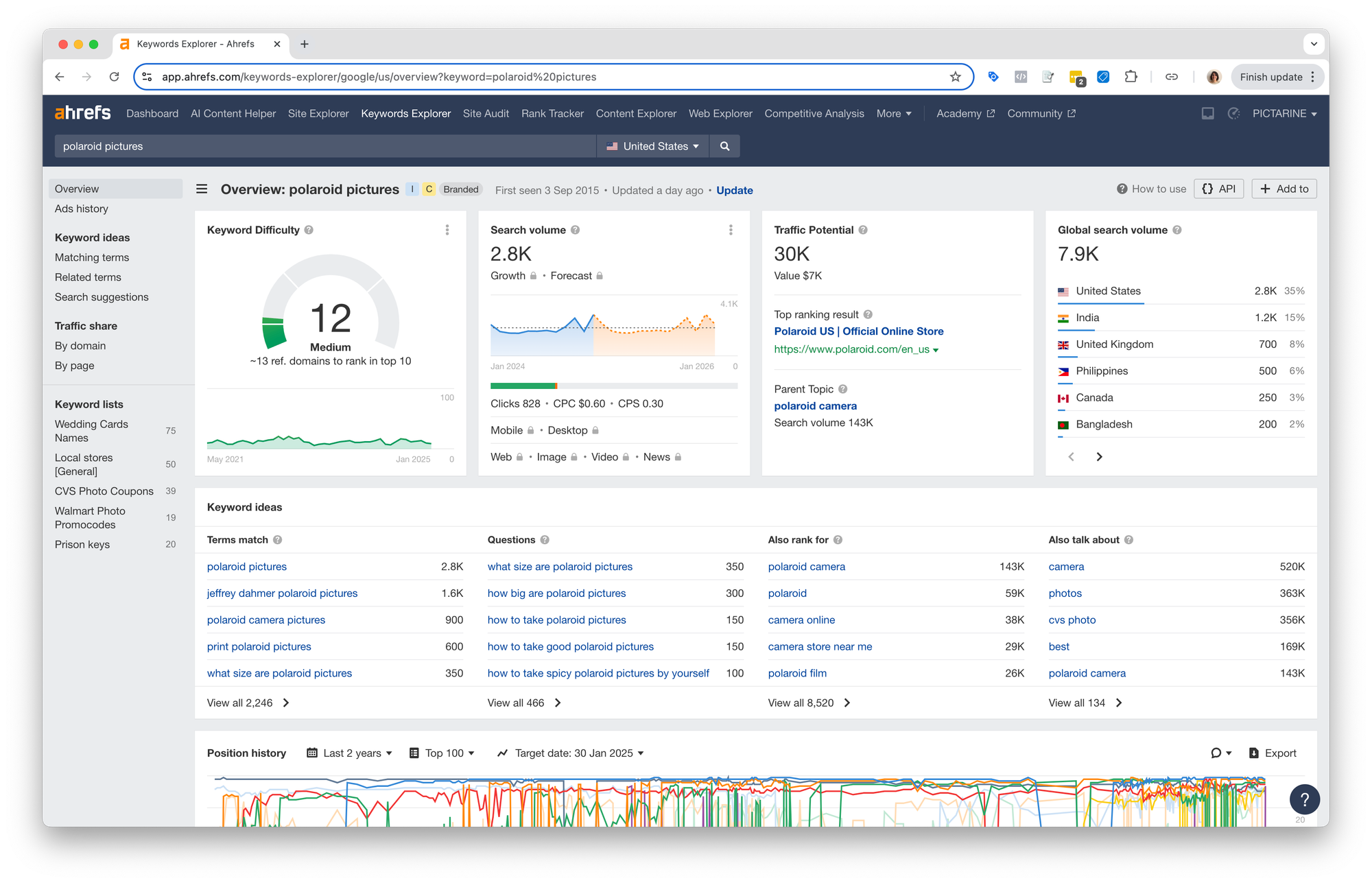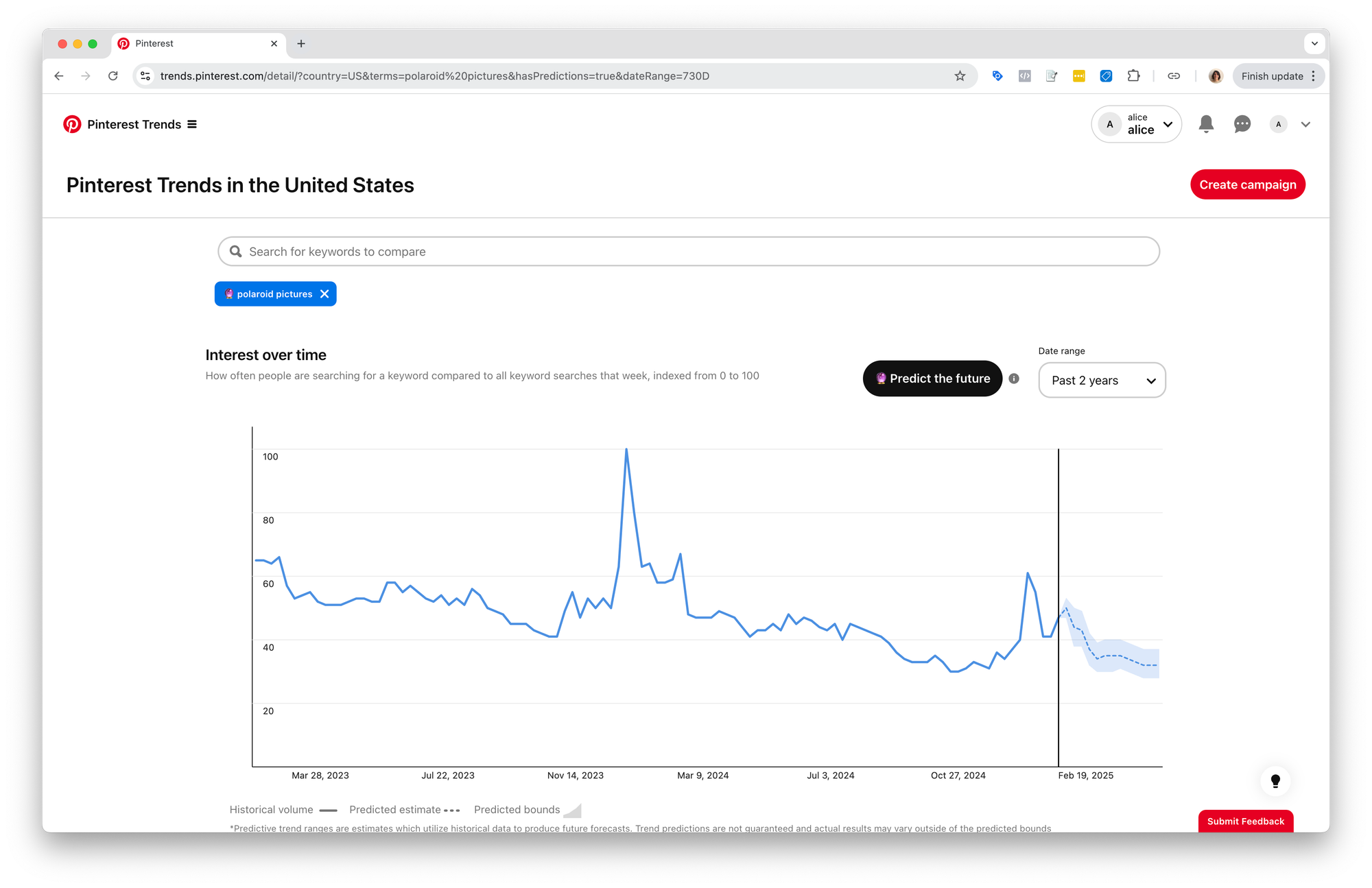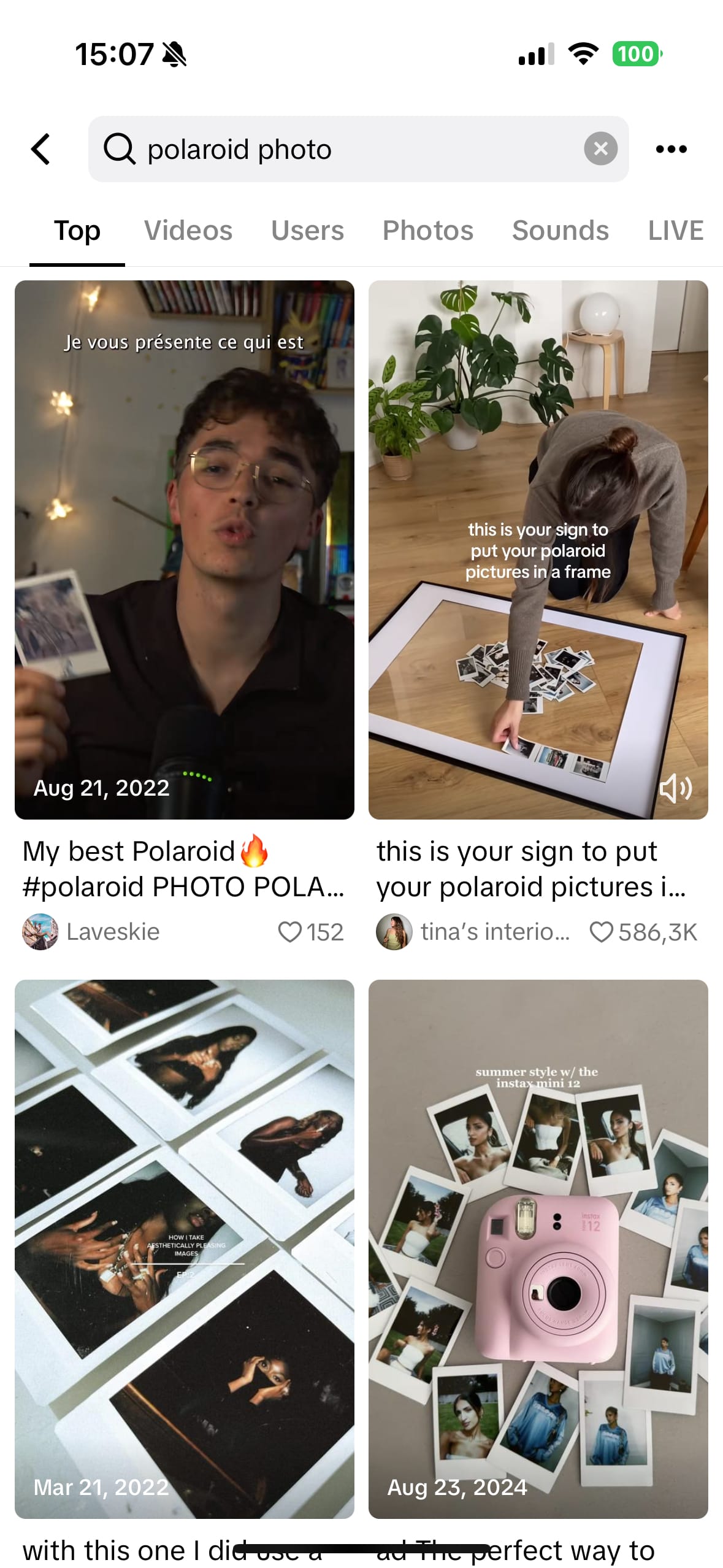From Google Search to multi-platform curation
Let's get to the point.

I recently shared the reasons explaining why we stopped investing in SEO regarding the specific use case observed in our vertical.
I believe many people misunderstood my point, assuming I was declaring that SEO is dead.
That wasn't the point of the article.
The aim was to illustrate how we (the Marketing team at Pictarine) perceive the shift in search behaviour and consequently, product discovery. Again, this applies to our vertical.
Let's get straight to the point with another interesting illustration of how the shift from Google Search to multi-platform discovery shaped our approach (and why we moved away from SEO).
Market research: before
Before deciding to reorganise internally, when we decided to move away from SEO, in terms of teams inside the Marketing department and in terms of orchestration of operations and ownership, we had the habit to look at search keywords on Google Search US using third-party data such as Ahrefs. While this wasn’t our only approach, it was the one we were most comfortable with. By looking at search volumes, we could get a rough estimate of the Total Market and build hypotheses to estimate our Total Addressable Market (TAM). From a performance marketing point of view, it was reassuring to uncover new opportunities and translate them into structured analyses on Google Sheets.
At a certain point in time, this method stopped working. I include textual ads here as well.
Market research: now
TRENDS.
Our Artificial Intelligence team developed a method (which I won't disclose for confidential reasons) that gives us a precise overview on trends related to our audiences.
Also, our Creative team owns the content curation for our product catalog.
That's precisely how our market research operates now.
It's a collaborative work between the Marketing and Creative team.
Marketing is able to identify which channels are the best to promote new products and how (eg. ad assets: image, video, shopping feed, etc.) and Creative captures emerging trends on various supports: prints, cards, posters, etc.
How it works
Our AI tool shows that Polaroid-style prints are trending within our audiences.
Here's a before / after of how we confirm the trend in order to estimate the TAM.



Before: a keyword-based approach
- Ahrefs provides an estimated search volume.
- But search volume ≠ actual demand. The number of people that would actually engage with our content.
Now: a multi-platform curation
- Pinterest shows us the exact terms people search for. This is helpful but still keyword-driven.
- TikTok provides a real trend indicator: the number of videos, likes, comments, and shares. Not to mention the trends that we directly observe on socials.
- It tells us that while users may not be actively searching for this product, there’s clear engagement once they see it.
- They don’t go to Google to search for something they don’t know exists but once they see it in their social feed, they engage.
That is precisely the paradigm of pull and push. Google Search and multi-platforms curation.
- Google Search (pull) relies on users actively searching for something they know about.
- Multi-platform (push) is a creative asset that pops up to the right audience before they even know they like that kind of stuff.
The effort required to promote a product on social platforms is significantly lower than trying to get seen in a keyword-based market, especially for new and emerging products.
Last year, we printed more than 1 million retro prints. That's how powerful trends can be.
Why this matters beyond new customers
So far, we’ve talked about how we introduce new products to users who don’t know us yet.
But what about people who do know us?
Now that's the story of the brand. More exactly, users who know who we are, what we do and that directly land on our website.
They know we print photos.
But they don't know we constantly work on our catalog to provide with the best answer we can.
That's how product discovery for returning users play an important part of our growth strategy. I speak here about returning users since they know us so they came at least once.
Let's tackle that one in a future article about product marketing.
Final thoughts
We are recognising that search behaviour is changing and product discovery is happening in new ways in our vertical.
For us, that meant shifting from a search-first approach to a trend-first, multi-platform strategy.